Learn how to grow and care for beautiful broom plants with this comprehensive guide. Discover the best varieties, planting tips, watering and fertilizing needs, pruning techniques and solutions for common issues. Enjoy vibrant yellow blooms and low-maintenance greenery in your garden.
How to Grow and Care for Broom Plants
If you’re a gardener or plant enthusiast looking to add some unique and low-maintenance greenery to your outdoor space, broom plants might just be the perfect choice. These hardy shrubs are known for their eye-catching, broom-like appearance and their ability to thrive in a variety of conditions. In this comprehensive guide, we’ll explore everything you need to know about growing and caring for broom plants, from selecting the right variety to proper planting and maintenance.
Understanding Broom Plants
Broom plants, also known as genista or cytisus, are a genus of evergreen or semi-evergreen shrubs native to Europe, North Africa and parts of Asia. These plants are characterized by their slender, upright stems and bright, yellow pea-like flowers that bloom in the spring or early summer.
There are several different species of broom plants, each with its own unique characteristics and growth habits. Some of the most popular varieties include:
Scotch Broom (Cytisus scoparius)

Here’s a short information chart for Scotch Broom:
| Attribute | Information |
|---|---|
| Botanical Name | Cytisus scoparius |
| Plant Type | Deciduous shrub |
| Soil Type | Well-drained, sandy or loamy soil |
| Color Varieties | Yellow, occasionally white or pink |
| Zones | 5-8 (USDA Hardiness Zones) |
| Exposure | Full sun |
| Bloom Time | Late spring to early summer |
| Height/Spread | 3-10 feet tall / 3-6 feet wide |
This is one of the most common and recognizable broom plants, with bright yellow flowers and an upright, broom-like appearance.
Spanish Broom (Genista hispanica)

Here’s a short information chart for Spanish Broom:
| Attribute | Information |
|---|---|
| Botanical Name | Genista hispanica |
| Plant Type | Deciduous shrub |
| Soil Type | Well-drained, sandy or loamy soil |
| Color Varieties | Yellow |
| Zones | 6-8 (USDA Hardiness Zones) |
| Exposure | Full sun |
| Bloom Time | Late spring to early summer |
| Height/Spread | 4-6 feet tall / 4-6 feet wide |
A low-growing variety with bright yellow flowers and a more sprawling growth habit.
Warminster Broom (Cytisus x praecox)
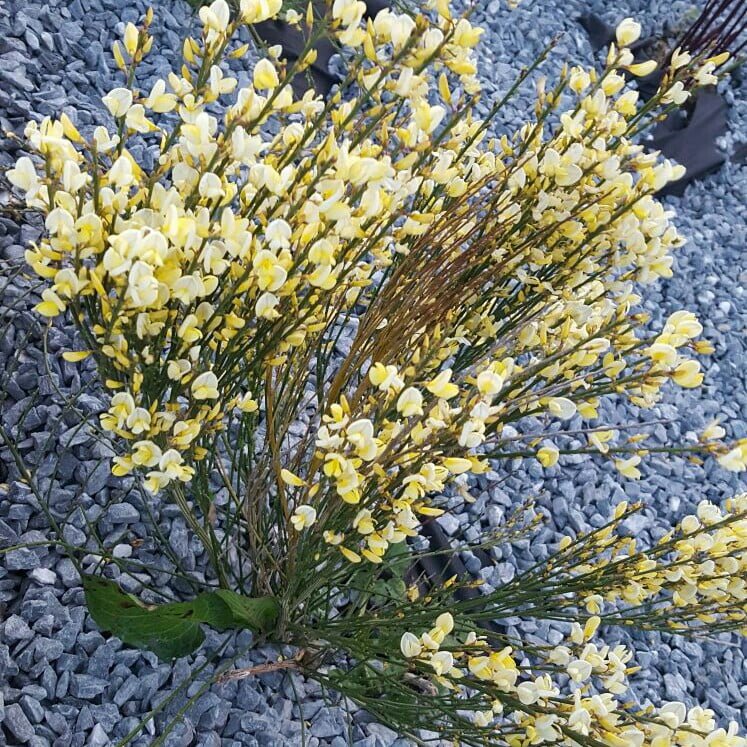
Here’s a short information chart for Warminster Broom:
| Attribute | Information |
|---|---|
| Botanical Name | Cytisus × praecox |
| Plant Type | Deciduous shrub |
| Soil Type | Well-drained, sandy or loamy soil |
| Color Varieties | Yellow, occasionally white or pink |
| Zones | 5-8 (USDA Hardiness Zones) |
| Exposure | Full sun |
| Bloom Time | Late spring to early summer |
| Height/Spread | 3-5 feet tall / 3-5 feet wide |
A hybrid variety that combines the best features of Scotch and Portuguese brooms, with vibrant yellow flowers and a compact, rounded shape.
Silk Broom (Cytisus battandieri)
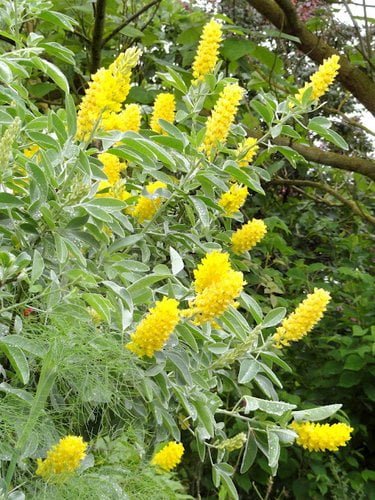
Here’s a short information chart for Silk Broom:
| Attribute | Information |
|---|---|
| Botanical Name | Cytisus battandieri |
| Plant Type | Deciduous shrub |
| Soil Type | Well-drained, sandy or loamy soil |
| Color Varieties | Yellow |
| Zones | 7-9 (USDA Hardiness Zones) |
| Exposure | Full sun |
| Bloom Time | Late spring to early summer |
| Height/Spread | 6-10 feet tall / 6-8 feet wide |
A smaller variety with bright yellow flowers and a dense, compact growth habit.
Choosing the Right Variety
When selecting a broom plant for your garden, it’s important to consider your climate, soil conditions, and desired size and appearance. Some varieties, like the Scotch broom, can be invasive in certain regions, so it’s always a good idea to check with your local nursery or extension office before planting.
Planting and Location
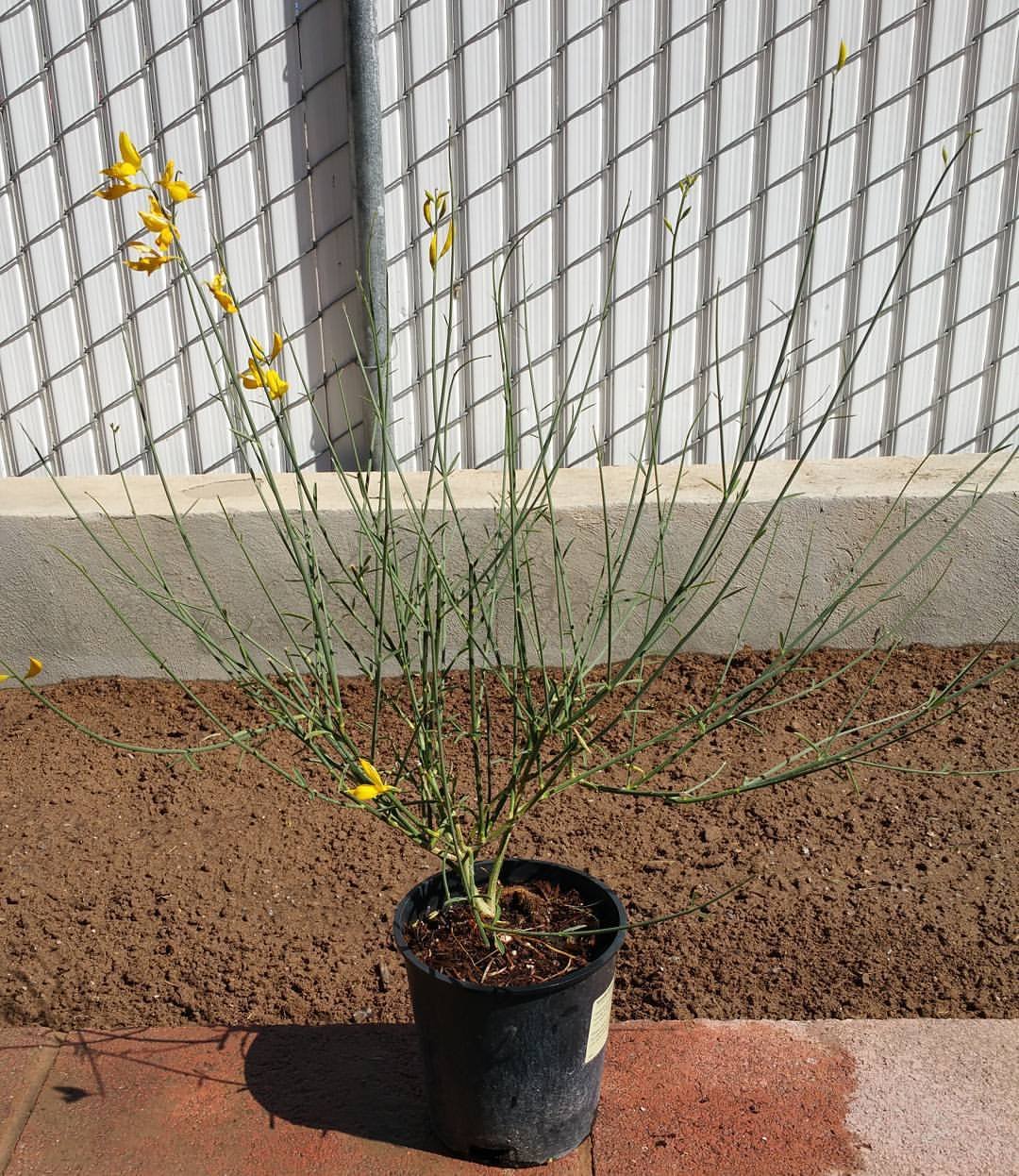
Broom plants are generally hardy and can tolerate a wide range of growing conditions, but they do have some specific preferences when it comes to planting and location.
Sunlight: Most broom plants prefer full sun to partial shade, with at least six hours of direct sunlight per day. They can tolerate some shade, but too much can result in sparse flowering and leggy growth.
Soil: Broom plants prefer well-draining soil that is slightly acidic to neutral pH. They can tolerate poor soil conditions but may not thrive in heavy, clay soils or consistently wet areas.
Spacing: Depending on the variety, broom plants can grow anywhere from 2 to 6 feet tall and wide. When planting, be sure to space them according to their expected mature size, allowing enough room for air circulation and growth.
Planting: Dig a hole that’s twice as wide as the root ball and slightly shallower than the depth of the root ball. Gently loosen the roots and place the plant in the hole, making sure the top of the root ball is level with the surrounding soil. Backfill the hole with the original soil and water deeply.
Watering and Fertilizing
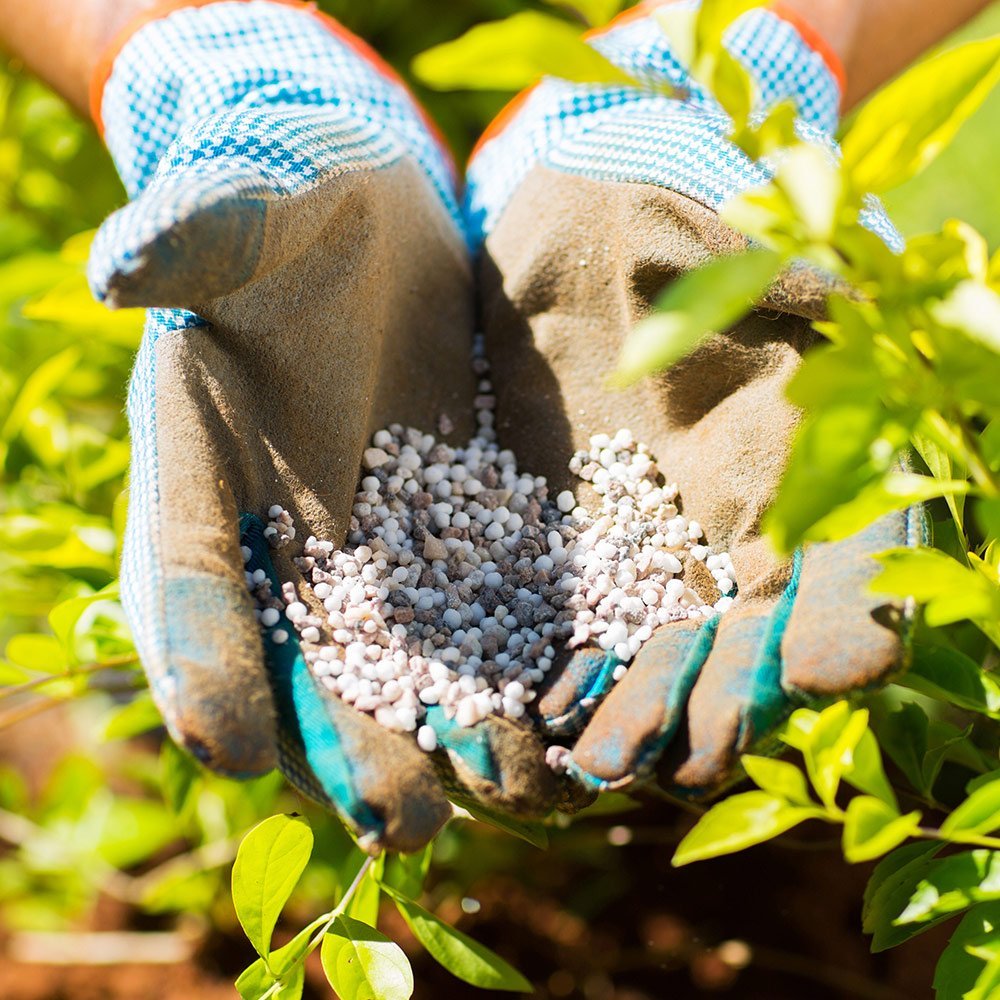
Once established, broom plants are relatively drought-tolerant and require minimal watering. During the first year after planting, however, it’s important to water them regularly to encourage strong root growth.
Watering: Water newly planted broom plants deeply once or twice a week, allowing the soil to partially dry out between waterings. Established plants can be watered every two to three weeks during periods of prolonged drought.
Fertilizing: Broom plants generally don’t require frequent fertilization, as too much nitrogen can actually inhibit flowering. If desired, you can apply a balanced, slow-release fertilizer in early spring, following the product instructions for application rates.
Pruning and Maintenance
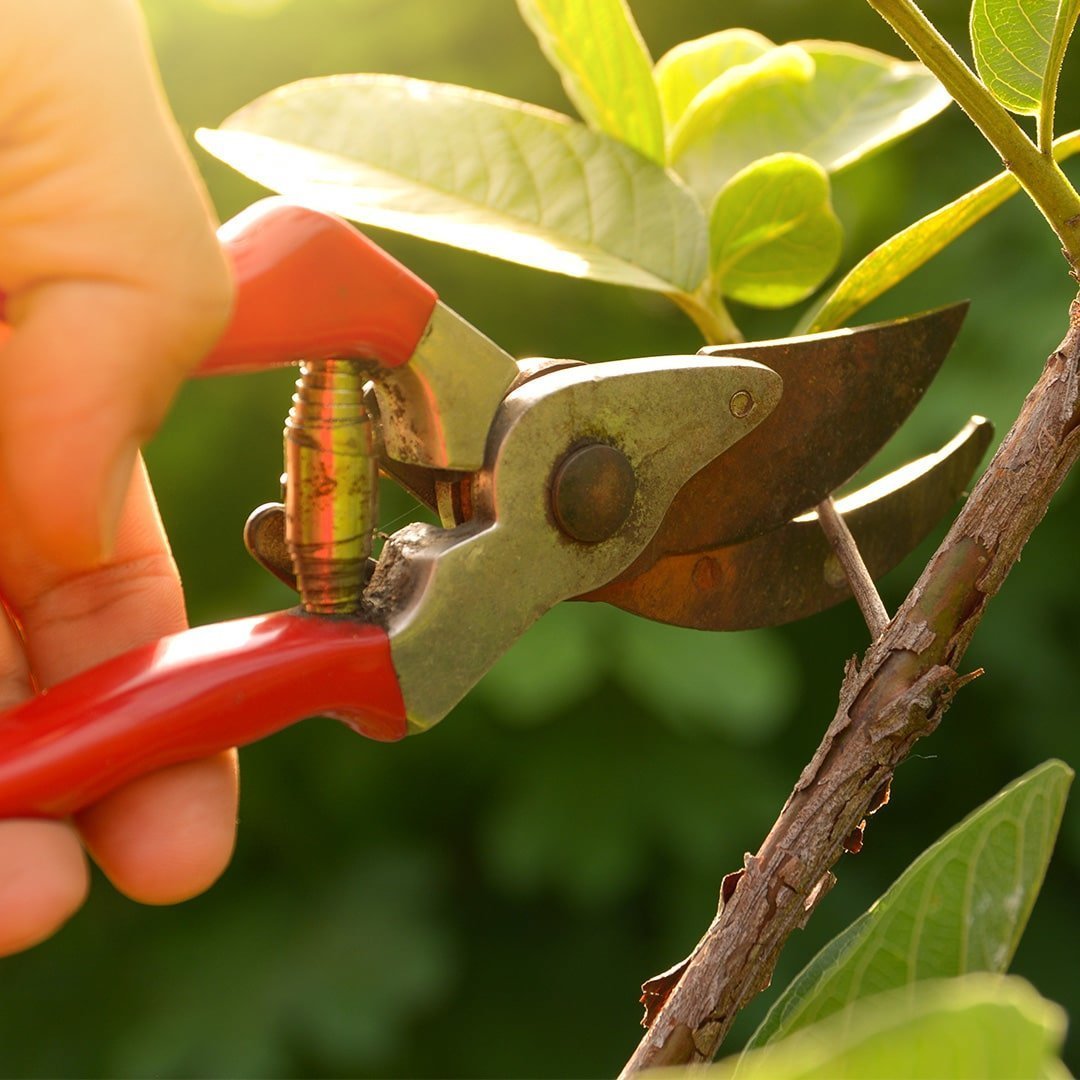
Broom plants are relatively low-maintenance and require only occasional pruning to maintain their shape and promote healthy growth.
Pruning: After the plant has finished flowering, you can prune back any dead or damaged branches, as well as any wayward growth that doesn’t conform to the desired shape. Be sure to make clean cuts just above a set of healthy leaves or buds.
Deadheading: To encourage more prolific flowering, you can deadhead (remove spent blooms) after the initial flush of flowers has faded.
Mulching: Applying a 2-3 inch layer of organic mulch around the base of the plant can help retain moisture and suppress weeds.
Winter Protection: In colder climates (USDA Hardiness Zones 5 and below), it’s a good idea to protect your broom plants by covering them with burlap or a frost blanket during periods of extreme cold or heavy snow.
Propagation
Broom plants can be propagated through seed or semi-hardwood cuttings, making it easy to create new plants for your garden or to share with friends and neighbors.
Seed Propagation: Collect seed pods from your existing broom plant in late summer or early fall. Allow the pods to dry completely before removing the seeds. Sow the seeds in a well-draining seed starting mix, lightly covering them with soil. Keep the soil moist and provide bottom heat if possible to encourage germination.
Cutting Propagation: In late summer or early fall, take 4-6 inch semi-hardwood cuttings from the current year’s growth. Remove the lower leaves and dip the cut end in rooting hormone powder. Plant the cuttings in a well-draining potting mix and keep them consistently moist until roots form (usually within 4-6 weeks).
Common Issues and Troubleshooting
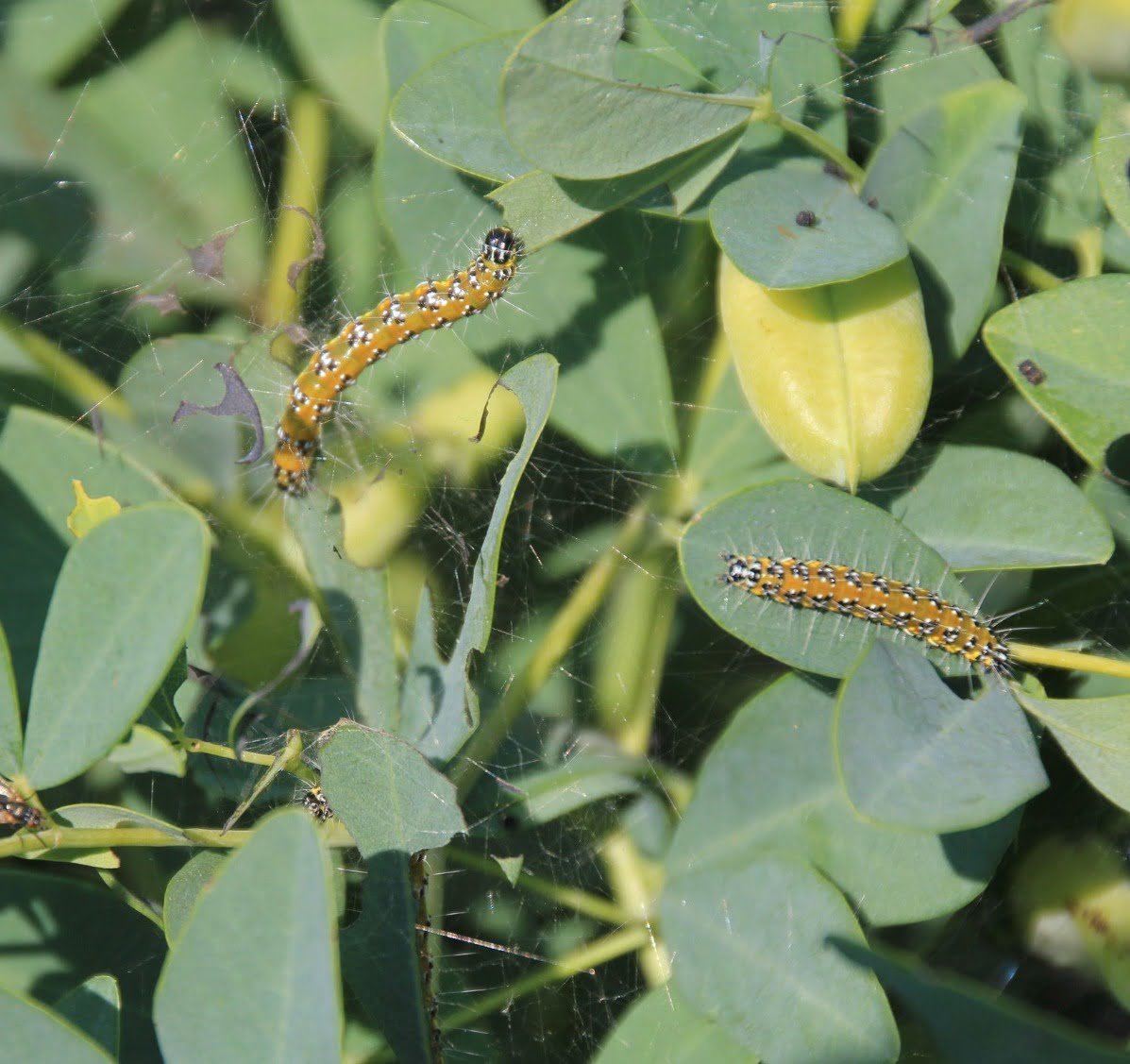
While generally hardy and low-maintenance, broom plants can occasionally encounter a few common issues. Here’s how to identify and address some of the most common problems:
- Sparse Flowering: If your broom plant isn’t producing many flowers, it could be due to too much shade, over-fertilization, or improper pruning. Ensure it’s getting adequate sunlight and prune after flowering to encourage new growth.
- Leggy Growth: If your broom plant is becoming leggy or sparse, it may be a sign that it’s not getting enough sunlight. Prune back the leggy growth and move the plant to a sunnier location if possible.
- Pest Problems: Broom plants can be susceptible to aphids, spider mites, and other common garden pests. Treat infestations promptly with insecticidal soap or neem oil, following the product instructions carefully.
- Disease Issues: While relatively disease-resistant, broom plants can occasionally develop fungal issues like leaf spot or rust. Provide ample air circulation and prune away any affected growth to prevent further spread.
With the right care and attention, broom plants can make a beautiful and low-maintenance addition to your garden or landscape. By following these tips for planting, watering, pruning, and troubleshooting, you’ll be able to enjoy their vibrant yellow blooms and unique, broom-like appearance for years to come.
Pingback: Strawberry Shake Philodendron Care -
Pingback: Ficus Tineke Growing Guide -
Pingback: How to Grow and Care for Broom Plants | Gardeni...